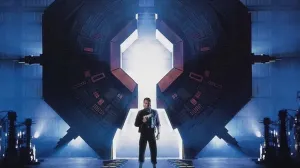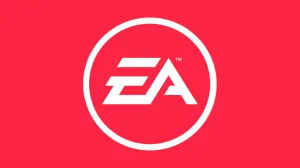
Marvel Comics has planned a series of one-shots tied to The Immortal Hulk from creators outside of the core series before it concludes later this year in issue #50. Even though Flatline is not the first of these takes (that would be The Threshing Place from writer Jeff Lemire and artist Mike Del Mundo), it reads like an appropriate starting point as it delivers a singular vision from writer, artist, and colorist Declan Shalvey accompanied by letterer Cory Petit. The final piece is an extensive exploration of the ideas, styles, and motifs developed in the undeniably excellent pages of The Immortal Hulk from a truly singular comics talent.
Videos by ComicBook.com
Shalvey focuses his story on a familiar Hulk theme: duality. However, the duality in this comic is not simply that of Bruce Banner and his alter-ego. The core dynamic rests between their paired existence (in the role of student) and the introduction of Dr. Noolan, one of Banner’s mentors from before his accident (in the role of teacher). Hulk and Banner are shown to be two sides of the same raging coin with the Hulk’s outward aggression turned inward as a metaphor for depression when Banner is conscious. Noolan is the outside observer capable of seeing the entirety of their shared being.
As a teacher who strives to see students in their immense complexity, often struggling with mental illness, this framing struck a personal chord. Noolan arrives with little patience and direct words, but that does not undermine her kind intent. Instead, she strives to help Bruce see himself in his own entirety and to help him grow from acknowledging the problems he faces. It’s a delicate line to walk and the balance here may have benefited from additional space, but her goal of helping Bruce to care for himself is never in doubt.
The lack of delicacy plays well in both dialogue and action. When the former student and teacher talk, they do not waste time on niceties or remove the sharp edge from truth. When this transitions into an action sequence, there is no element of forced surprise as the escalation is apparent in both words and images. Sometimes wisdom must be thrashed out.
Shalvey excels in both quiet moments of difficult reflection and a loud smackdown between gamma-powered individuals. In comparison to Bennett’s work on The Immortal Hulk, infused with grotesque details and Carpenter-esque body horror, Shalvey emphasizes impact. His character’s expressions and actions land like sledgehammers in dynamic compositions. They make for exciting sequences, but also provide a strong foundation for more somber sentiments by the story’s end.
It makes for a potent framing of one man’s ongoing struggle with depression and a stunning sequence of Bruce’s cycle with each death followed by Hulk’s implied messages discovered in their body’s placement the following morning. Although this approach does not speak to topics of depression, suicide, or mental illness in a wholly original fashion, the subject matter and presentation are so well presented that it still makes for a deeply moving climax. What is most effective is how those outside of Bruce, including both Hulk and Noolan, are best able to recognize his potential and need for help.
The Immortal Hulk: Flatline offers readers a stirring parable on seeing the value of one life, acknowledging that even seemingly simple problems can be seen from at least two sides. It takes the incredible depth found in The Immortal Hulk and focuses it for a brief and powerful tale from one of comics’ most dynamic talents. That alone would be sufficient to recommend this one shot. Yet the small, gentle gestures embedded in the student-teacher relationship of Flatline make it a far more special comic than Declan Shalvey’s take on the Immortal Hulk, and for that I applaud it.
Published by Marvel Comics
On February 17, 2021
Written by Declan Shalvey
Art by Declan Shalvey
Colors by Declan Shalvey
Letters by Cory Petit
Cover by Declan Shalvey








